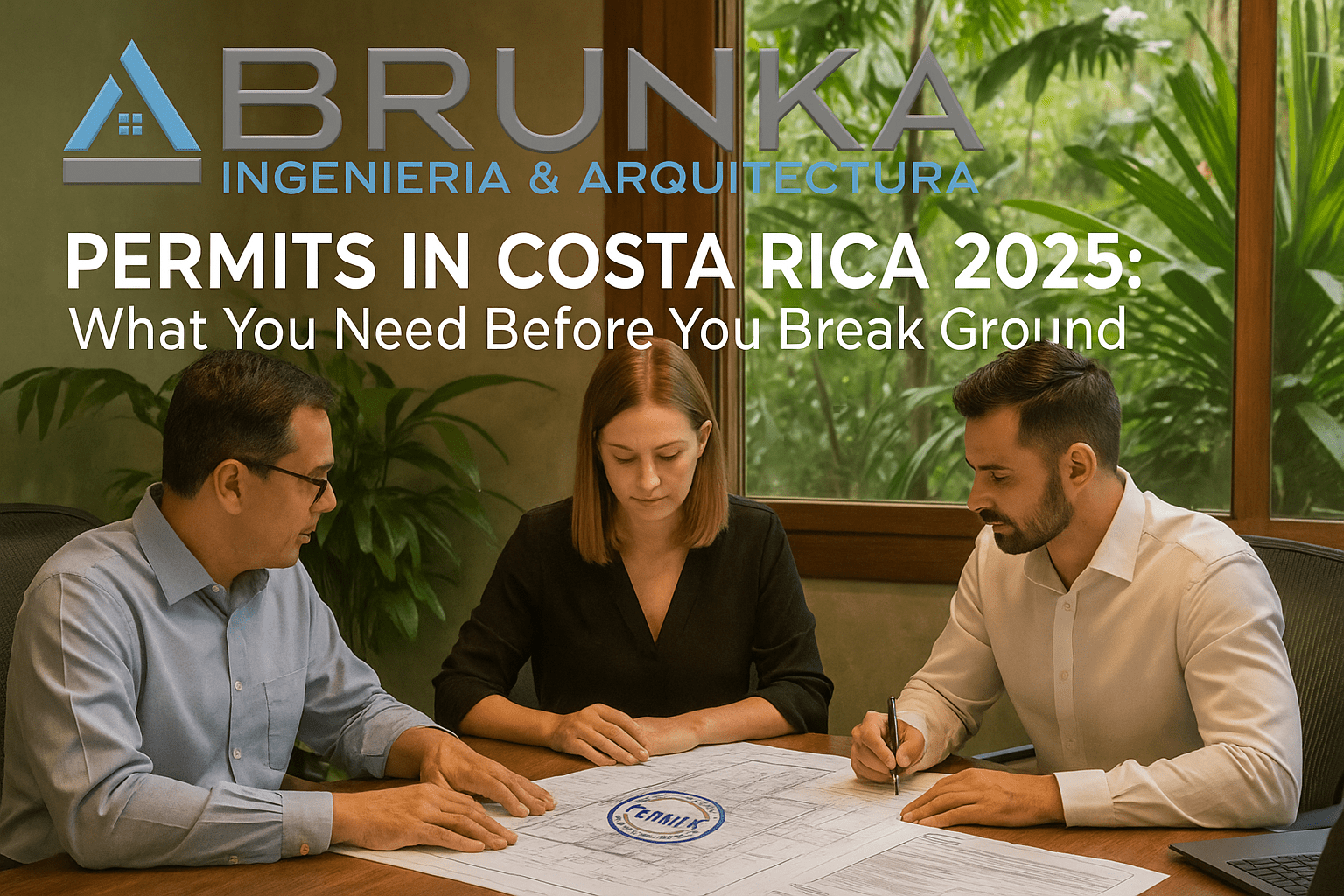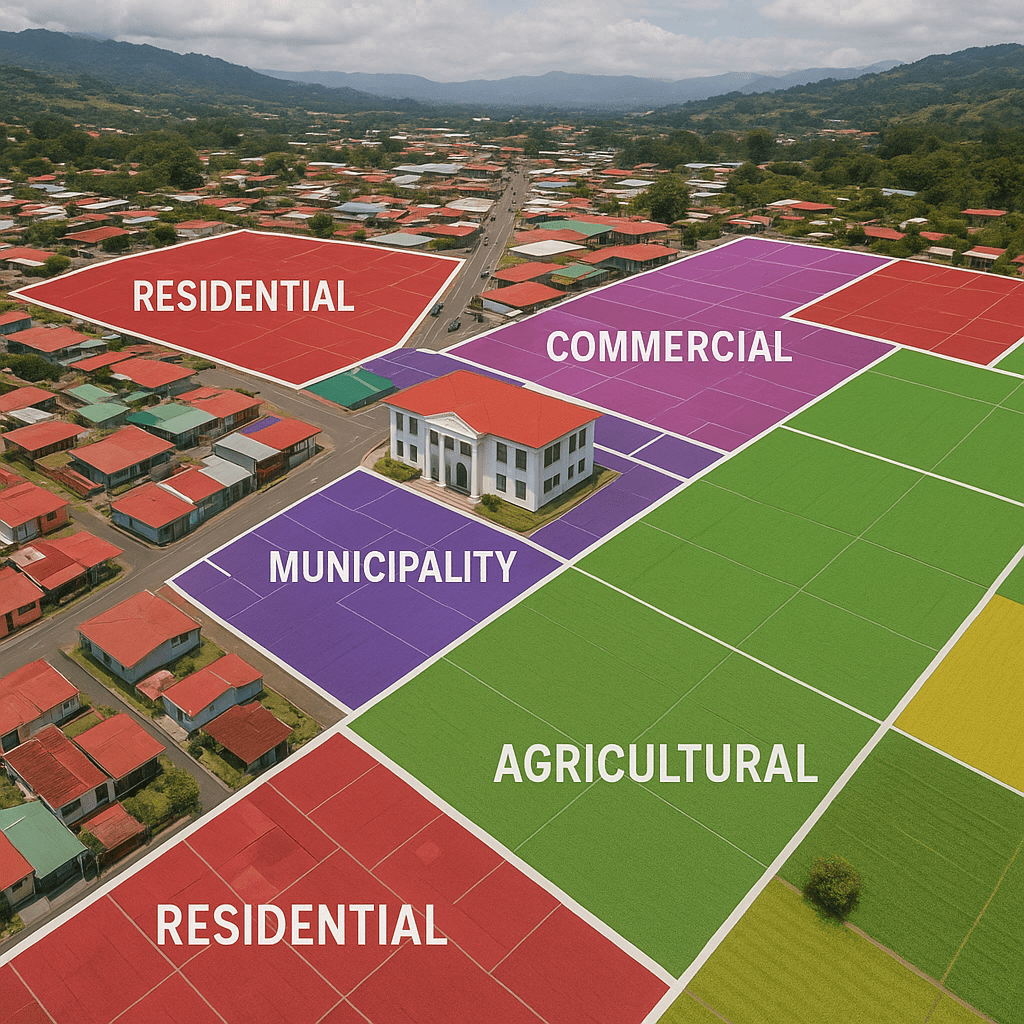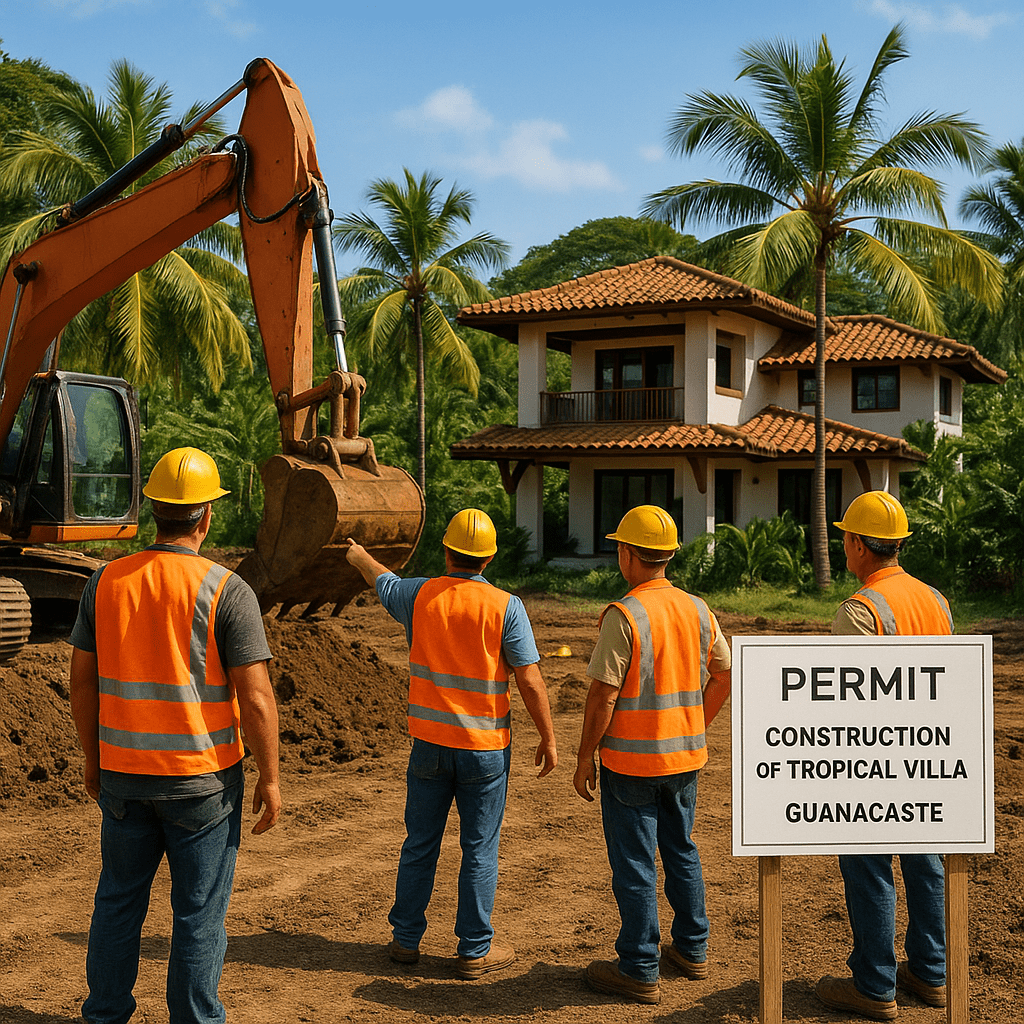
Permits in Costa Rica 2025: What You Need Before You Break Ground
Summary
- Building in Costa Rica requires more than just buying land — permits are critical.
- Missing a step can delay your project by months and increase costs by 30–50%.
- Key approvals include land-use, environmental viability (SETENA), and municipal building permits.
- Working with local architects speeds up approvals and avoids red tape.
- Here’s a step-by-step guide to permits in 2025 and how to keep your project on schedule.
Why Permits Matter More Than Ever in 2025
If you’ve dreamed of building a villa in Guanacaste, a beachfront condo in Jacó, or an eco-lodge in Monteverde, you’ll need to face the reality: permits can make or break your project in Costa Rica.
As of 2025, the government has tightened environmental reviews, digitalized municipal processes, and increased penalties for unpermitted construction. I’ve seen projects stall for a full year simply because a foreign investor skipped the Uso de Suelo (land-use permit) before submitting architectural drawings.
The good news? With proper planning and the right professionals on your team, you can avoid costly delays and start building within 6–9 months.
1. Land-Use Permit (Uso de Suelo)
The Uso de Suelo, or Land-Use Permit, is the cornerstone of any building project in Costa Rica. Issued by the local municipality, this document defines exactly how the land can be legally used — whether for residential housing, commercial activity, tourism projects, or agricultural purposes. Without it, no other permits can move forward.

Why it matters: zoning restrictions are strict, and ignoring them can lead to years of setbacks. For instance, in Santa Teresa, a buyer discovered only after purchase that their “vacation rental” property was zoned for agricultural use. The rezoning process took 8 additional months and cost thousands in legal and municipal fees.
Smart strategy for 2025: Always request the Uso de Suelo certificate before signing the purchase agreement. Many municipalities now offer online applications, but timelines vary greatly — from as little as 2 weeks in Escazú to 3+ months in rural zones.
2. Environmental Viability (Viabilidad Ambiental – SETENA)
In Costa Rica, SETENA (Secretaría Técnica Nacional Ambiental) oversees environmental impact approvals. Depending on the size and location of your project, you may need a full Environmental Impact Assessment (EIA) or a simpler D1/D2 declaration. This step ensures construction won’t damage fragile ecosystems like mangroves, rivers, or protected forests.
For example, beachfront developments in Jacó often trigger Category B environmental studies, which require professional environmental engineers. One developer I worked with cut review time by 4 months by hiring a biologist familiar with SETENA’s new digital platform.
Key results:
- Submitting complete studies upfront reduces revision cycles.
- Projects under 500m² may qualify for a simplified process in 2025.
Learn more from SETENA official site.
Tip for 2025: SETENA is moving toward faster digital submissions, but approvals still take 2–6 months depending on complexity. Hiring a local environmental consultant can cut approval times significantly by ensuring paperwork is clean and aligned with current regulations.
3. Water Letter (Carta de Disponibilidad de Agua)
Water is one of the most critical (and often overlooked) permits. Before you can build, you need proof of water availability from either AyA (national water authority) or your local ASADA (community-managed water association). This document guarantees your project has a legal water source — without it, you can’t get a construction license.
Strategy that works: In Tamarindo, we secured the water letter early while finalizing designs. This shaved 3 months off the approval timeline, as the municipality won’t even look at your construction plans without it.
Tip for 2025: Demand for water permits is at an all-time high, especially in Guanacaste. Start this process early and explore sustainable backup options like rainwater harvesting or gray-water recycling. These not only speed approvals but also make your project more attractive to eco-conscious buyers.
4. Building Plans Approval (Colegio Federado de Ingenieros y de Arquitectos – CFIA)
Every architectural drawing must be approved and digitally stamped by the CFIA, Costa Rica’s professional engineering and architecture board.
This process is now fully digital (via the CFIA system), and fees are based on the project’s estimated construction cost.
Example: A villa project in Nosara submitted incomplete electrical plans, delaying approval by 6 weeks. Since 2024, CFIA requires all technical plans (structural, electrical, plumbing) together for faster processing.
5. Municipal Building Permit (Permiso de Construcción)
Only after securing land-use, water letter, environmental viability (if required), and CFIA approval can you apply for the municipal construction permit.
This is where many foreign investors get stuck. Municipalities check every detail — including property tax status. A single unpaid property tax bill can freeze your permit.
Result-driven tip: In San José, we cleared a client’s approval in just 45 days by ensuring all documents were pre-checked and digitally uploaded before the municipal review.
6. Special Cases: Coastal and Protected Areas
Building near the beach? You’ll face the Maritime Zone Law (Zona Marítimo Terrestre). The first 50 meters from high tide is public land, and the next 150 meters requires a concession, not ownership.
In Monteverde or near national parks, you’ll need additional environmental studies and possibly approval from SINAC (National System of Conservation Areas).
Lesson learned: One eco-lodge project in Monteverde cut permit approval by half by using local consultants who knew the regional SINAC office’s requirements inside-out.
Common Mistakes That Delay Permits
- Skipping steps: Submitting building plans without a water letter.
- Poor translations: English-only documents slow municipal approval.
- Underestimating timelines: Assuming all municipalities move at the same speed.
- Not hiring local professionals: Foreign-only teams often overlook regional rules.
If you want smoother approvals, check our Costa Rica architecture & engineering services.
Real Strategies to Stay Ahead in 2025
- Start with a Permit Timeline – Map every approval step. Projects with clear timelines average 30% faster approvals.
- Hire Local Experts – Architects registered with CFIA handle digital submissions more efficiently.
- Use Digital Platforms – Municipalities and SETENA have expanded online systems; skipping digital means weeks of delays.
- Budget for Fees Early – Expect permit-related fees to add 3–5% of project cost.
- Stay Updated on Policy Changes – Regulations evolve yearly; in 2025, water availability is the biggest bottleneck in Guanacaste.

Conclusion
Building in Costa Rica is rewarding, but only if you respect the rules. From the Uso de Suelo to the final municipal permit, each step is a checkpoint to protect both your investment and the environment.
By approaching permits with strategy — and working with experienced local professionals — you’ll not only save time but also avoid costly mistakes that can derail your dream project.
If you’re serious about building in Costa Rica, partner with experts who understand both the law and the local culture. Explore our services at Architect Engineer. Together, we’ll help you break ground the right way.
FAQs (Schema-Ready)
Q1: How long does it take to get building permits in Costa Rica in 2025?
Most projects take 6–9 months, depending on municipality and environmental reviews.
Q2: Can foreigners apply for permits in Costa Rica?
Yes, but all submissions must go through licensed local architects or engineers registered with CFIA.
Q3: Do small homes need environmental permits?
Projects under 500m² may qualify for simplified SETENA approval, but location matters.
Q4: What happens if I build without permits in Costa Rica?
Fines, stop-work orders, and even demolition. Municipalities are stricter in 2025.
Q5: What’s the biggest delay for permits in Guanacaste?
Water availability. Many municipalities won’t issue permits without a valid Carta de Agua.



